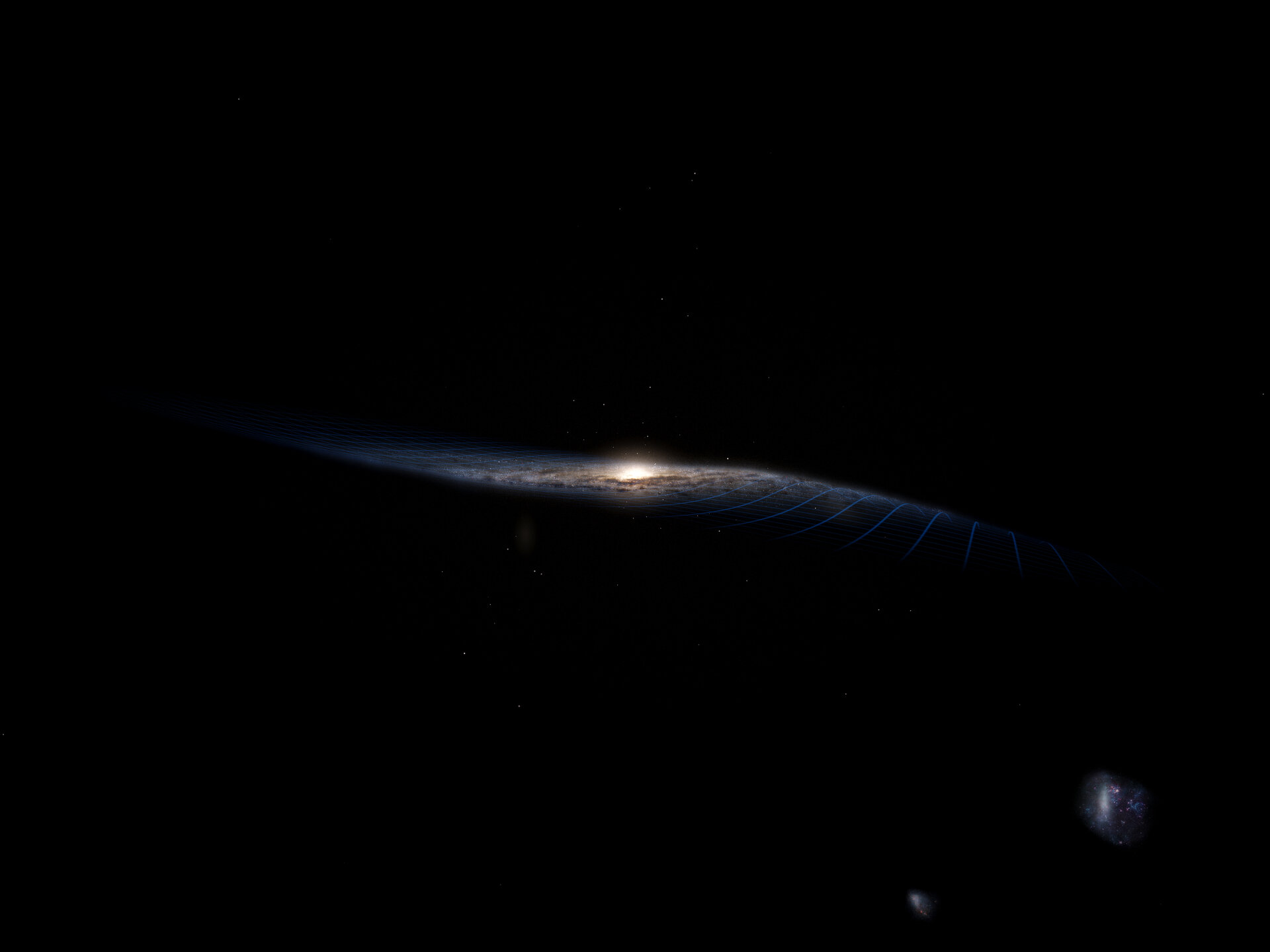A galactic crash could be behind Milky Way's warped appearance
The Milky Way's warped shape probably is due to a long-running collision with a smaller galaxy. But which galaxy this might be is a mystery.
This insight comes courtesy of the Gaia spacecraft, a European Space Agency mission designed to map the movement of up to a billion stars with high precision.
Gaia zeroed in on the Milky Way's disc, which curves up on one side and points down on the other, creating a warped shape. The spacecraft's observations have shown that the warp is moving over time, and quite quickly.
Related: Milky Way Quiz: Test Your Galaxy Smarts

The warp is changing so fast that scientists think that previous explanations for the skewed shape — such as a magnetic field or the influence of dark matter, which we cannot see directly — would not work in this case, as these produce slow-moving changes. So that just leaves a drastic solution: galactic collision.
"We measured the speed of the warp by comparing the data with our models. Based on the obtained velocity, the warp would complete one rotation around the center of the Milky Way in 600 to 700 million years," lead author Eloisa Poggio, a Ph.D. student at the Turin Astrophysical Observatory in Italy, said in a statement from the European Space Agency. (By comparison, the sun takes about 220 million years to orbit the Milky Way.)
Which galaxy caused this collision remains a mystery. One possible candidate is the dwarf galaxy Sagittarius, which scientists say likely did move through the Milky Way disc a few times in the past. Moreover, current models show that Sagittarius is being absorbed into the Milky Way. But more study will be required to support this possibility.
Get the Space.com Newsletter
Breaking space news, the latest updates on rocket launches, skywatching events and more!
Gaia has been operating in space for six years. Further data releases later in 2020, and in the second half of 2021, may help to shed more light on this mystery, the team said.
A study based on this research was published in Nature Astronomy.
- Get Ready for Milky Way Season with These Galactic Night-Sky Photos
- Pretty Panoramic Milky Way Photo Resembles an Astronaut's-Eye View
- The Universe Reveals Its True Colors in This Stunning Milky Way Photo
Follow Elizabeth Howell on Twitter @howellspace. Follow us on Twitter @Spacedotcom and on Facebook.
OFFER: Save at least 56% with our latest magazine deal!
All About Space magazine takes you on an awe-inspiring journey through our solar system and beyond, from the amazing technology and spacecraft that enables humanity to venture into orbit, to the complexities of space science.
Join our Space Forums to keep talking space on the latest missions, night sky and more! And if you have a news tip, correction or comment, let us know at: community@space.com.

Elizabeth Howell (she/her), Ph.D., was a staff writer in the spaceflight channel between 2022 and 2024 specializing in Canadian space news. She was contributing writer for Space.com for 10 years from 2012 to 2024. Elizabeth's reporting includes multiple exclusives with the White House, leading world coverage about a lost-and-found space tomato on the International Space Station, witnessing five human spaceflight launches on two continents, flying parabolic, working inside a spacesuit, and participating in a simulated Mars mission. Her latest book, "Why Am I Taller?" (ECW Press, 2022) is co-written with astronaut Dave Williams.
-
dfjchem721 "One possible candidate is the dwarf galaxy Sagittarius, which scientists say likely did move through the Milky Way disc a few times in the past. "Reply
How would they know this? Perhaps a star, gas and dust trail connects the dwarf galaxy Sagittarius to the Milky Way. And this happened twice. Again, how could they know this? Sounds like deja vu all over again.










